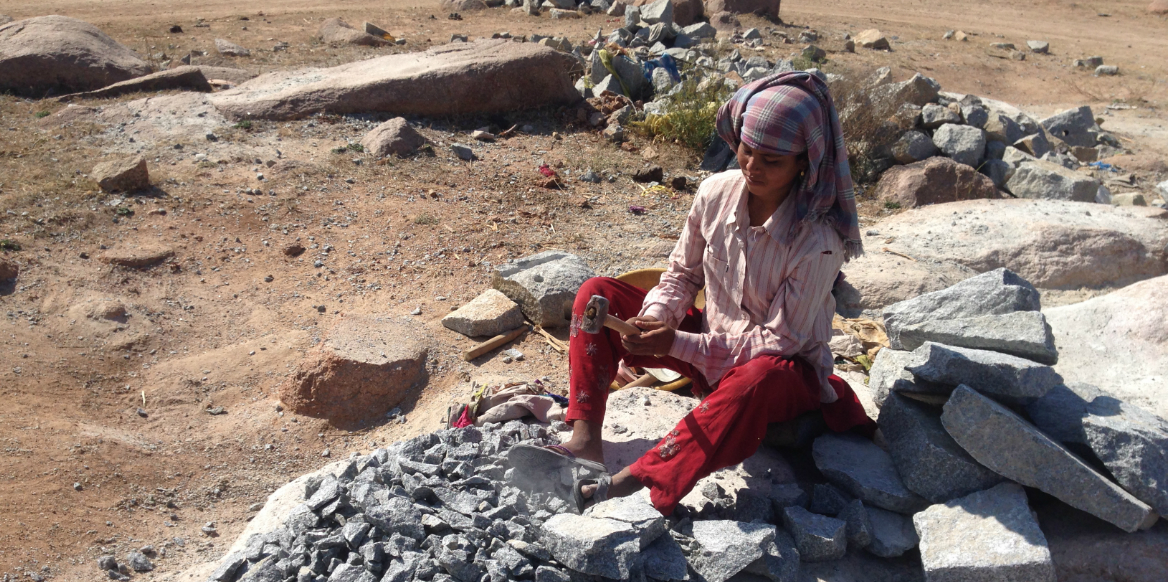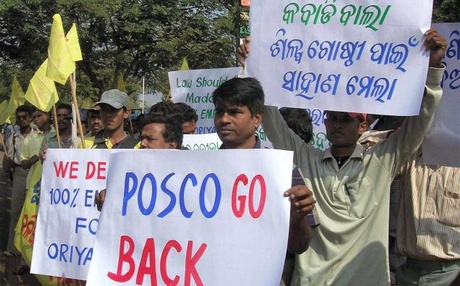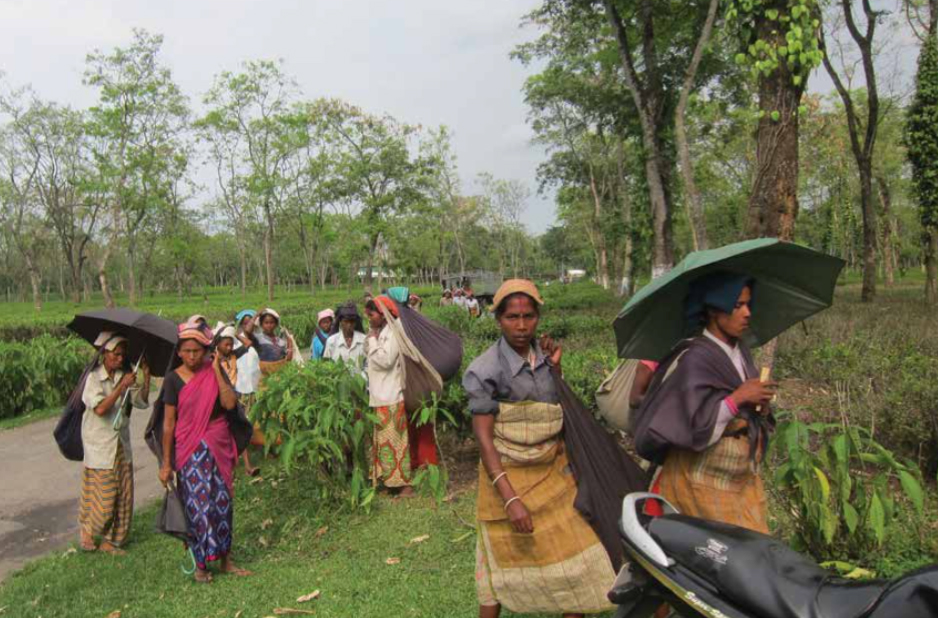Redress for Transnational Business-Related Human Rights Abuses in Australia
By May Miller-Dawkins, Dr Shelley Marshall, Dr Kate Macdonald and Kristen Zornad
This report contributes to ongoing debates about how Australia can best fulfill its obligations to enable people affected by human rights failures of Australian companies abroad to access remedy, with a particular focus on the distinctive role of non-judicial redress systems. The report asks: What effects do transnational non-judicial mechanisms have? Under what conditions do they contribute to human rights remedy? And how can the design and operation of non-judicial redress mechanisms be improved?
The report finds that Australia has not yet comprehensively addressed the human rights impacts of Australian companies and investors in either policy of legal terms. Women and men whose human rights are impacted within Australian company value (supply) chains or investment portfolios still have very few avenues to seek remedy, and face significant hurdles. Australia’s recent commitment to develop a National Action Plan on Business and Human Rights provides an opportunity to engage diverse stakeholders in considering the role of all parts of government, and developing comprehensive policy and legal frameworks to fulfill obligations under the UN Guiding Principles on Business and Human Rights. The third pillar of access to remedy requires significant attention. The Australian Government should consider how to enable and ensure access to judicial and non-judicial remedies that respond to the human rights impacts of Australian companies and investors overseas.
An executive summary of the report can be read below.
Executive Summary
Around the world peoples’ lives are affected by the actions of businesses. In addition to positive impacts on livelihoods, ideas or technologies, business activities are also sometimes associated with significant human rights abuses – for example through land dispossession and forced resettlement, exploitation of workers, environmental damage or harm to peoples’ health. Access to a remedy for these abuses is frequently impeded by failures of domestic legal systems, limited options in terms of redress mechanisms, significant structural imbalances of power between corporations and local communities, and distance of various types including – geographic, cultural, bureaucratic, political and economic – from decision-makers and established redress mechanisms.
This report contributes to ongoing debates about how Australia can best fulfil its obligations to enable people affected by the human rights failures of Australian companies abroad to seek access to a remedy. There will be a particular focus on the distinctive role of non-judicial redress systems. The report asks the following questions:
· What effects do transnational non-judicial mechanisms have?
· Under what conditions do they contribute to human rights remedy?
· And how can the design and operation of non-judicial redress mechanisms be improved?
Analysis of these questions draws on empirical research carried out over a period of three years into communities and workers pursuing a remedy due to grievances in the garment and footwear, mining, industrial, and agribusiness sectors in India and Indonesia. In the case studies we examined, workers and communities sought justice through using a variety of strategies including organized protests , transnational campaigning, litigation, negotiation, and making complaints to non-judicial mechanisms at the national and transnational level. This research paints a rich picture of the complexity, difficulty, and often limited success, of communities and workers seeking remedy or justice for human rights abuses through non-judicial as well as formal redress channels, leading to a number of key findings.
Key Findings
1. Australia must do more to improve access to a remedy, and become a leader in promoting human rights adherence in business
Australia has not yet comprehensively addressed the human rights impacts of Australian companies and investors in either policy or legal terms. Women and men whose human rights are impacted within Australian company value (supply) chains or investment portfolios still have very few avenues to seek a remedy, and face significant hurdles. Australia’s recent commitment to develop a National Action Plan on Business and Human Rights provides an opportunity to engage diverse stakeholders in considering the role of the government in business and human rights. It is also an important step towards developing a comprehensive policy and legal framework to fulfil Australia’s obligations under the UN Guiding Principles on Business and Human Rights. The third pillar of access to remedy requires significant attention. The Australian Government should consider how to enable and guarantee access to judicial and non-judicial remedies that respond to the human rights impacts of Australian companies and investors overseas.
2. Non-judicial redress mechanisms have serious limitations and cannot substitute formal justice systems
Non-judicial redress mechanisms are a key feature of the ecosystem of human rights redress. However, the capacity of non-judicial mechanisms to deliver redress in all cases is limited. Non-judicial mechanisms do not have the mandate to stop projects which are violating human rights. In most cases, they cannot ensure compliance with negotiated agreements, nor provide remedies that repair the harm caused to an individual’s health, the environment or affected communities. Non-judicial redress mechanisms can even be damaging in the overall process to an individual’s access to a remedy. This could be the case if they are used to delay political interventions, for example, or to avoid litigation.
3. Despite their limitations, non-judicial redress mechanisms have the potential to complement formal justice systems
Non-judicial redress mechanisms have the potential to play a distinctive role in complementing formal justice systems and regulatory frameworks. They provide alternative avenues to resolving a dispute that may take less time and be less resource intensive than litigating in court, and offer an avenue of redress in cases where it is practically impossible to use the formal justice system effectively (either within the host or home country).
Although non-judicial mechanisms cannot be a substitute for the provision of effective, legally-binding mechanisms, non-judicial mechanisms have the potential to complement the formal authority of government by using different kinds of leverage to generate new commitments and changes by companies. Non-judicial mechanisms located within government, for example, can use the power of denial of access to government procurement contracts, halting of import or export licenses, denial of access to subsidies and other types of government support until sufficient evidence of business and human rights compliance has been provided by businesses. These are powerful sources of leverage that may at times exceed the influence of fines issued by courts. Such sources of leverage can apply pressure on businesses, and motivate them to create change within transnational supply chains, produce mediated agreements, or to change their in policy in financial institutions to ensure greater compliance with human rights principles. Moreover, the evidence and determinations of non-judicial redress mechanisms can carry normative force that can influence the thinking and actions of others, including governments and investors. At their best, they may help to build new relationships, to problem solve in a timely way, provide limited compensation, or influence the actions of other actors through producing evidence and determinations. We recommend a greater investigation into the ways that non-judicial and formal justice systems can be combined to produce greater synergies, and to strengthen each other.
4. The non-judicial redress mechanisms studied sometimes provided a positive result, but fell consistently short of delivering remedy.
Across the cases we examined, the non-judicial redress mechanisms fell short of delivering an individual remedy, both procedurally and substantively. However, in approximately half of the cases we investigated, there was some form of positive result from the perspective of claimants. For example, satisfaction was gained through the provision of access to compensation, or a venue in which to mediate a settlement. Beyond the results of formal mediations or settlements, there was also some evidence that the relationships built, evidence gained, and the public exposure of potential human rights violations in a non-judicial redress mechanism process could sometimes contribute to other kinds of positive effects. This includes empowering communities or worker’s groups, influencing decision-makers to adopt a human rights based approach to their policies, drawing public attention to a problem, to shifting the power dynamics between companies, communities and workers.
5. Those making claims face significant barriers to accessing and using procedures
Yet in all these cases, people continue to face significant barriers in accessing and using relevant procedures. Further, the results of mediation or other non-judicial processes largely failed to meet the standard of ‘relief needed to repair the harm’. [1] In many cases, engaging with non-judicial redress mechanisms also had some negative effects. This included reinforcing existing power dynamics and further disenfranchising workers or communities; entrenching existing business positions and practices (for example, allowing a project to go ahead); leading to perverse responses (for example, withdrawal of orders rather than helping a supplier fix a problem); or taking significant resources and time away from other organising strategies. For individuals involved in seeking redress, there were often significant hurdles, which included financial costs, the investment of time, and the capacity to sustain action in the face of continued hardship, and in some cases harassment.
6. Persistent support from NGOs or unions increases the power of aggrieved communities and reduces barriers to redress, resulting in better results
The effects of non-judicial redress mechanisms are often strongest when they interact positively with the work of other actors – such as the sustained campaigning of both workers and communities, the decision-making of investors, or the determinations of governments.
The slight shifting of power dynamics can contribute to improved outcomes for communities. However, these kinds of effects are, by their nature, highly contingent and rely on the sustained efforts of communities, NGOs or union allies.
These findings provide the foundation for a number of recommendations for the reform of non-judicial mechanisms, and ways that they can be better resourced and achieve greater leverage.
Proposals for Reforms
7. Reforms to strengthen non-judicial mechanisms
There are a range of factors that enable or constrain non-judicial mechanisms in delivering a remedy, or producing systemic change in particular contexts. The United Nations Guiding Principles on Business and Human Rights articulated one set of ‘effectiveness criteria’ for non-judicial mechanisms. Such mechanisms should be legitimate, accessible, predictable, equitable, transparent, rights-compatible and should be a source of continuous learning. While not undermining the importance of these factors, this research finds that it is possible to fulfil the UNGP effectiveness criteria in a formal way, yet still fall very short of delivering an effective redress or remedy for human rights violations committed in the context of business. We identify six critical additional factors that contribute to enhancing the effectiveness of non-judicial redress mechanisms, which include:
• Approaches to redressing power imbalance: an ability to balance the power where impartiality is required, and where the purpose of the mechanism requires specific effects to redress existing power imbalances;
• Processes for gathering and verifying evidence: clear approaches to generating or using evidence to inform actions and determinations;
• Local level engagement: effective non-judicial mechanisms operate effectively between and across local, national and global levels, which includes the help of trusted intermediaries.
• Strategic relationship management: skilled staff who are able to broker, maintain and manage a wide set of relationships with political nous and sensitivity;
• Leverage: strong bases and mechanisms for generating change in behaviour in targets; and
• Resourcing: commitment, skilled staffing, financial and other resourcing is a necessary but not a sufficient condition for effectiveness.
8. Efforts to redress power imbalances are vital
The importance of non-judicial redress mechanisms in redressing power imbalances between affected people and companies is an important theme that runs throughout our analysis. This has important implications for the design of rules and procedures used by non-judicial mechanisms in managing disputes. For example, this implies a need to provide greater assistance to affected people who suffer a grievance to make a complaint, such as through the direct provision of targeted capacity building for marginalized communities, accommodation of third party organisations such as NGOs or trade unions working alongside communities, and the provision of active community or worker outreach processes to support knowledge of, and access to available redress channels. In some cases, attentiveness to power imbalances may also entail support for evidence gathering of a kind that reflects the divergent views of competing parties. This is in addition to independent investigations carried out directly by the grievance body. In all of these tasks impartiality is required. There is a need to balance competing powers. Differentiated strategies are required to ensure a fair balance of power between parties involved in the redress process.
9. Build relationships with human rights organizations in countries in which grievances occur
Another central theme emerging from this analysis is the importance for non-judicial redress mechanisms of building strong working relationships with human rights organizations in countries where grievances occur. Effective non-judicial mechanisms can operate effectively between and across local, national and global levels. They can also draw on the assistance of trusted intermediaries to enable them to have a direct impact on where the human rights violations occur. This has implications for their location and resourcing, as well as the need for staff with skills in brokering, maintaining and managing a wide set of cross-sectoral and cross-jurisdictional relationships with political awareness and sensitivity. Such relationships are also required to support ongoing efforts to strengthen the implementation of any agreed remedies.
10. Build points of leverage to bring about long term changes in business behaviour
Australian non-judicial redress mechanisms have so far failed to establish a strong foundation for leverage over Australian companies, investors and other parties involved in harmful human rights practices. This requires the establishment of strong bases and mechanisms to generate a change in the behaviour of relevant targets, especially through the ability to alter incentives or establish other sources of authority recognised by these targets. Key sources of leverage we identified include those based on reputation, learning and dialogue, market-based incentives or hierarchical authority. The Australian non-judicial mechanisms discussed in this report have the potential to wield strong leverage over businesses to bring about the sustained respect of human rights, as such mechanisms are based within government. The Australian export credit agency, Efic, for example, has the power to withhold credit to Australian companies who apply, if their human rights record is poor. Australian non-judicial redress mechanisms ought to coordinate more effectively with other government departments to influence business behaviour though the areas of procurement, export and import licensing, subsidies and financing, and other means. Commitment, skilled staffing, and financial and organizational resourcing are particularly important factors in establishing the influence and authority required to facilitate a remedy for human rights violations in the context of business practices.
11. Changes in procedures, more resources and stronger leverage are required
To some extent, effectiveness in these dimensions can be directly improved through changes to the internal procedures, governance or working methods of non-judicial redress mechanisms, such as the Australian National Contact Point. However, factors related to resourcing and leverage in particular are also heavily dependent on the actions of other parts of the Australian government, as well as businesses, NGOs, broader supporters, donors and stakeholders.
Accordingly, some of this report’s recommendations are directed specifically towards the design and operation of institutions involved in grievance handling, such as the Australian National Contact Point. Further recommendations are directed to other parts of the Australian government, in recognition of the importance of holistic government approach to supporting access to remedy. This also acts to ensure that appropriate external resourcing and leverage for effective non-judicial grievance handling mechanisms can be provided and sustained. We also present recommendations to businesses and civil society engaged in developing or participating in non-judicial redress mechanisms.
Recommendations are outlined in greater detail at the end of this report.
[1] See, International Covenant on Civil and Political Rights, opened for signature 16 December 1966, 999 UNTS 171 (entered into force 23 March 1976) art 2(3); General Assembly, UN Basic Principles and Guidelines on the Right to a Remedy and Reparation for Victims of Gross Violations of International Human Rights Law and Serious Violations of International Humanitarian Law, 60th sess, UN Doc A/RES/60/147 (21 March 2006) principles 2(b), 3(c)-(d), 11(a)-(b), 12, 15-23; Committee on Economic, Social and Cultural Rights, General Comment 9: The Domestic Application of the Covenant, 19th sess, UN Doc E/C.12/1998/24 (3 December 1998)[9].







